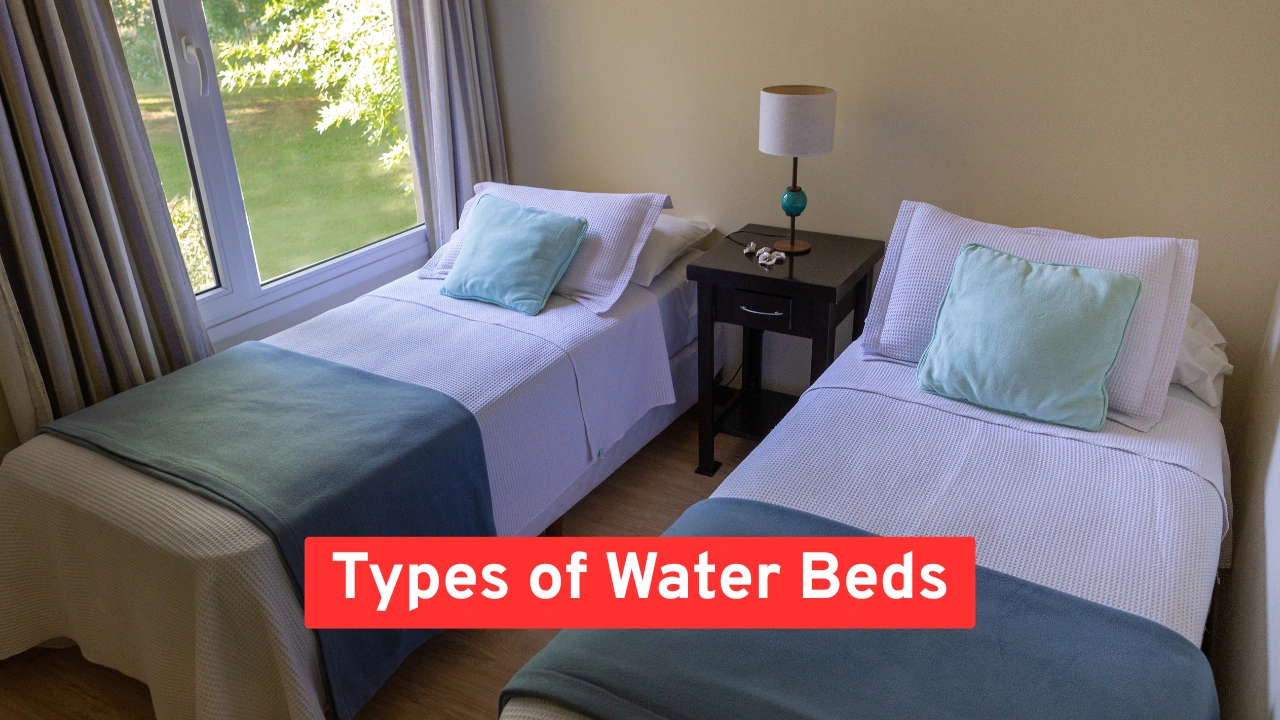A water bed is a mattress filled with water instead of foam or springs. It adjusts to your body and offers a unique way to sleep. The design helps many people sleep better by relieving pressure on their joints and back.
The water in the bed moves slightly as you lie down. That movement can feel calming and gentle. It’s not like sleeping on a normal mattress, and that’s exactly what makes it special for many users.
Read More About fok959s-m model and bed models here fok959s-m model
What Is Water Beds?
A water bed is a mattress filled with water instead of foam or springs. It is designed to mold to your body, offering support and comfort. The water moves slightly, creating a calming and relaxing sleep experience.
Water beds often come with built-in heaters that keep the mattress warm. This added warmth helps relax muscles and improves sleep quality. The gentle motion and pressure relief make it popular for people with back or joint pain.
A Quick Look at the History of Water Beds
The idea of a water bed is not new. Doctors used early water mattresses in the 1800s to prevent bedsores. But the modern version became popular in the 1970s and 1980s. People loved the soft, floating feel and the ability to stay warm during cold nights.
At that time, water beds were a symbol of luxury and innovation. Over the years, they were improved with heaters, safety liners, and better materials. These upgrades made them easier to use in regular homes.
How Does a Water Bed Work?
A water bed uses water to support your weight. When you lie down, the water shifts and fills in the spaces under your body. This helps keep your back straight and reduces pressure on your hips and shoulders.
Most water beds come with a built-in heater. This keeps the bed at a comfortable temperature. Warm water helps muscles relax and promotes deeper sleep. You can set the heat level just the way you like it.
Also Read: Bed Sheet The Right Fit for Your Mattress
What Types of Water Beds Are Available?
There are two main kinds of water beds. Each one has different features and benefits.

Hard-Sided Water Bed
This type has a wooden frame that holds the mattress in place. The frame gives structure and keeps the water from shifting too much. It looks like a big box with a mattress inside.
Soft-Sided Water Bed
A soft-sided water bed looks more like a normal bed. It has a padded cover and can fit into most bed frames. The water mattress is inside a foam edge, which holds its shape without needing a wooden frame.
Both types offer the same comfort but look different. Soft-sided beds are often easier to fit in with your room’s style.
Benefits of Sleeping on a Water Bed
One big reason people choose a water bed is comfort. The water inside the mattress shapes itself around your body. This removes pressure from your spine and joints. That can help you sleep without pain or stiffness.
Another benefit is warmth. The heated water keeps the bed cozy, even in the winter. Some people also say the gentle wave motion helps them relax faster and fall asleep more easily.
The surface is also great for people with allergies. Because there is no stuffing inside, dust mites and allergens can’t collect like they do in regular mattresses.
Drawbacks You Should Know
A water bed also comes with a few challenges. First, they can be very heavy. Once filled, a water bed can weigh over 1,500 pounds. That means it needs to be placed on a strong floor, not a weak one.
There is also the risk of leaks. Modern beds are stronger than older ones, but leaks can still happen. You’ll need to check for small holes and patch them if needed. Also, keeping the water clean means adding a special conditioner every few months.
Some people don’t like the motion of the bed. Even with wave-reduction systems, you might feel movement if your partner turns or shifts. It can take time to get used to.
Also Read: Double Bed The Perfect Fit for Your Sleep Style
Comparing Soft-Sided and Hard-Sided Water Beds
Here’s a simple comparison to help you choose between the two types:
| Feature | Soft-Sided Water Bed | Hard-Sided Water Bed |
|---|---|---|
| Look | Like a regular mattress | Frame around mattress |
| Comfort Level | Very comfortable | Very comfortable |
| Frame Needed | No | Yes |
| Weight | Slightly lighter | Heavier |
| Maintenance | Easy to manage | Needs more setup |
| Style Fit in Room | Modern and flexible | Classic and specific |
This table gives you a quick idea of how each type fits into your home and lifestyle.
How to Care for a Water Bed?
Taking care of a water bed is not hard, but you do need to stay on top of it. The most important step is adding a water conditioner. You should do this every 3 to 6 months. It keeps the water clean and stops algae and bacteria from growing.
Check your heater often. If the heater breaks, the water can get cold quickly. That can cause your body to tense up at night. Make sure the thermostat works and adjust it to your comfort level.
Also, keep an eye on the seams and edges. If you see water or feel a soft spot under the bed, you may have a small leak. Use a patch kit to fix it right away.
Also Read: Floating Bed The Modern Bed That Makes Your Room Look Bigger
Tips for Choosing the Right Water Bed
When buying a water bed, think about where you will place it. The bed must sit on a strong floor that can carry the weight. Most people also want one that matches the look of their bedroom. A soft-sided model is best for that.
Ask the seller if the bed comes with a heater, liner, and water conditioner. These parts are not optional—they are necessary for comfort and safety. Make sure the mattress fits your size, such as queen or king.
Try to buy from a store that offers a trial period. That way, you can return it if it doesn’t meet your needs.
Water Beds and Back Pain: What to Know
Many people with back pain turn to a water bed for relief. The reason is simple: water spreads your weight evenly. That removes pressure points and keeps your back in a straight line.
The warmth of the heated water also helps. It relaxes muscles and increases blood flow. That’s why water therapy is used in many health programs. Sleeping on a water bed combines warmth, comfort, and support all in one place.
Also Read: Loaf Bed A Space-Saving Bed That Doubles as Furniture
Conclusion
A water bed offers a unique mix of comfort, support, and warmth. It may not be right for everyone, but those who enjoy the floating feel often never go back to regular mattresses. The key is understanding how it works, what it needs, and whether it fits your home.
If you’re ready to try something different for better sleep, a water bed could be just what you need. Keep it clean, warm, and well-maintained, and it can give you years of restful nights.




